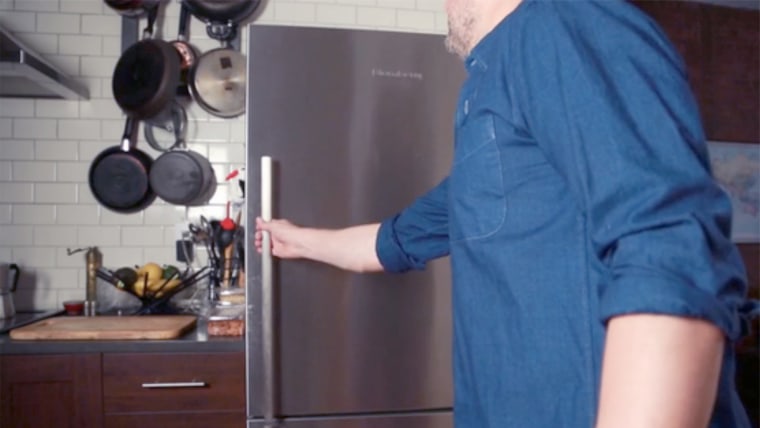The kitchen's the heart of the home, but, according to Dr. Charles Gerba, a microbiologist and professor at University of Arizona, it's also the heart of its germs. Between prepping and cleaning, the kitchen is a veritable incubator for bacteria. Here, Gerba (his nickname is Dr. Germ, BTW) revealed the five germiest places in your kitchen.
1. Kitchen sponge
"The kitchen sponge is wet and moist, always soaking up coliform bacteria. It's like bacterial heaven," said Gerba. In addition to coliform bacteria, Gerba also found 15% of sponges in a random study had salmonella growing in them.
Solution: Use paper towels to wipe up spills. Clean counters with an antibacterial kitchen wipe like Lysol or Clorox. Make it a habit to microwave thoroughly wet sponges for 1 to 2 minutes every day to sanitize them.
2. Kitchen sink
"Kitchen sinks are full of germs," said Gerba. "Think about it, everything is slopped into it. You cut raw meat then rinse off the cutting board in the sink. There's more fecal bacteria in a sink than there is in a flushed toilet! That's why dogs drink out of the toilet. They know better than to drink out of the kitchen sink!"
Solution: Wash the sink with hot, soapy water, especially after handling meat and poultry. Wipe out the sink using disinfectant kitchen wipes every day.

3. Cutting board
With 200 times more coliform bacteria than a toilet seat, cutting boards are hot beds of germs. When used to cut up poultry and meats, they can also have salmonella and campylobacter bacteria.
Solution: Wash the board in hot, soapy water after each use, then, to kill remaining germs, put it in the dishwasher or disinfect it with bleach (2 tablespoons of bleach to 1 gallon of water) or a good disinfecting kitchen cleaner like Lysol. To minimize cross-contamination, Gerba recommended using colored cutting boards: one for meats, one for veggies and one for poultry.
4. Fridge door handle
Think about how many times a day you open the fridge door and how many different foods you handle in-between, not to mention the times you use the kitchen sponge to wipe it. E. coli, salmonella and more can be growing on that handle.
Solution: Give the handle — and the entire kitchen door — a good wipe-down every day with a disinfecting kitchen wipe. Remember, kitchen wipes are only good for disinfecting a 3-by-3-foot area. Don't try to stretch it!

5. Kitchen counter
What can we say? The counter is where the action is when it comes to the kitchen — chopping veggies, cutting meats, cracking eggs, pouring milk — and using the aforementioned kitchen sponge to wipe up the spills from all this stuff. And then there are splashes from the likewise germy kitchen sink, said Gerba. This adds up to a lot germs.
Solution: Use cutting boards as much as possible when preparing foods. Instead of wiping counters with sponges or dish cloths, pick up spills with paper towels and clean counters with disinfecting kitchen wipes.
This post was originally published on Jan. 12, 2017.

